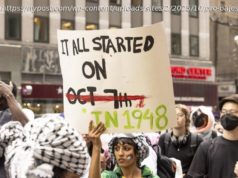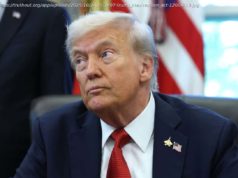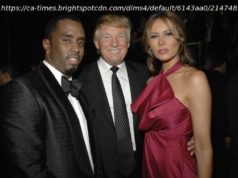Republican candidate’s election eve assault charge made a weird race ever more weird.
An election-eve misdemeanor assault charge against Republican Greg Gianforte has upended a Thursday special election in Montana that both parties were looking to for signs about the shifting political landscape in the U. S. since President Trump’s election.
The seat, which opened when Trump named Rep. Ryan Zinke to lead the Interior Department, has been Republican-held for two decades in a state Trump won in November by 20 points.
While polling gave Gianforte the advantage, the amount of attention and millions of dollars pouring into the race by outside groups in both parties signifies how Democrats are making a play for parts of the country once thought to be part of an impenetrable red wall.
In a shocking election eve twist, Gianforte was cited for misdemeanor assault after attacking a reporter Wednesday night, an incident that was captured on tape. It’s unclear how the event will affect the race since as many as two-thirds of voters already cast early ballots; though it caused Gianforte to lose the endorsements from three Montana newspapers. Democrats cut ads targeting voters on Facebook in the hopes it would help drive them to the ballot box. And both House Speaker Paul Ryan, R-Wis., and Rep. Nancy Pelosi, the chamber’s top Democrat, condemned the attack.
„This is a weird race that just got really, really weird, “ said Kyle Kondik, managing editor of Sabato’s Crystal Ball, a nonpartisan newsletter at the University of Virginia. He is one of a number of experts stressing the importance of evaluating the race by grouping it with others. Regardless of who wins Thursday, „this appears likely to be another instance of Democratic over performance, “ said Kondik.
Last month, the Democrat candidate lost by just a few points in a Kansas district which Trump had carried by 27 points, also suggesting a changing political landscape in the months since Trump narrowly beat Democrat Hillary Clinton by the smallest of margins in a handful of Midwestern states. In Montana, the Democrat candidate is bluegrass and country singer-songwriter Rob Quist. Gianforte is a former technology executive.
Special elections “can’t always foretell what will happen in the next high-stakes midterm, ” David Wasserman, House editor of the nonpartisan Cook Political Report, wrote in a Wednesday essay before the assault.
“Taken collectively, the margins in specials can tell us a good deal about the political environment — and so far, it’s looking really bad for Republicans, ” he said. Wasserman calculates that Democrats are outperforming their “generic” mark by an average of 9.5 points. “That’s really, really bad for Republicans, ” he said, noting the party needs to average a four-point gain to win a narrow House majority.
The Montana election also comes on the heels of recent state legislative victories for progressives in two separate districts — in New York and New Hampshire — that voted for Trump. All of it is contributing to Democrats feeling more optimistic about their chances for potentially retaking the House.
Yet open seats are always easier to flip. Further, Republicans attribute the tightness to Gianforte’s unique challenges that also contributed to his failed gubernatorial bid, including a public lands dispute over a stream near his property. They also point to the fact that Trump remains popular in Montana, as evidenced by Gianforte’s reliance on the assistance of the White House in advancing his campaign, including visits by both Vice President Pence and Donald Trump, Jr. Two days before the election, Pence released a new robo call urging voters to support Gianforte.
Quist also has his own challenges, with his financial record under scrutiny after he under reported income by $57,000 on his federal forms, according to the Associated Press.
While Montana hasn’ t voted for a Democratic president since Bill Clinton in 1992, it has a history of electing Democrats at the state level, including the current governor, Steve Bullock, who is in his second term.
The fact that a House seat in Montana is even competitive is emboldening progressives, who’ ve rallied behind Quist. “Rob Quist went into that campaign as a real, real underdog, ” said Vermont Sen. Bernie Sanders, who’s been campaigning for the progressive Democrat. “Nobody thought he had a shot. Today many of my Republican colleagues are getting nervous, ” Sanders said Wednesday on MSNBC.
“Just by the very nature that we’ re talking about this district shows what’s happening with the (political) environment, ” said Rep. Ben Ray Lujan, D-N. M., who chairs the DCCC.
If Quist actually wins, it would be a huge upset, especially considering how significantly he is being outspent. According to the Billings Gazette, in the past 20 days, Republican groups have spent almost four times as much against Quist — $1.93 million — as Democrats have spent against Gianforte: $442,450.
In the past few days, the nonpartisan Inside Elections changed its rating of the race from likely Republican to tilts Republican. “Democrats are doing better than expected and an upset is within the realm of possibility, ” Nathan Gonzales, the newsletter’s publisher, wrote in a column .
Democrats need to pick up 24 seats to take control of the House, which they lost during President Barack Obama’s first midterm election in 2010. More than the Montana special, both political parties are looking to a runoff election on June 20 in Georgia as a clearer sign of the potential for Democratic gains in the House in 2018. It is there that Democrat Jon Ossoff and Republican Karen Handel are in a heated race.
Yet, in a sign of the potential for a far broader playing field next year for Democrats, there are 71 districts more favorable to Democrats than the suburban Atlanta district, according to the Cook partisan voter index. In a Tuesday press conference with reporters, Democrats leading their party’s House reelection efforts announced they are adding 20 Republican-held districts to their target list, bringing the total to 79.
Democrats say they are expanding the map by touting an unpopular health care bill passed by the Republican House and Trump’s approval ratings, now around 37%, at all-time lows for modern presidents at this point in their presidencies.






